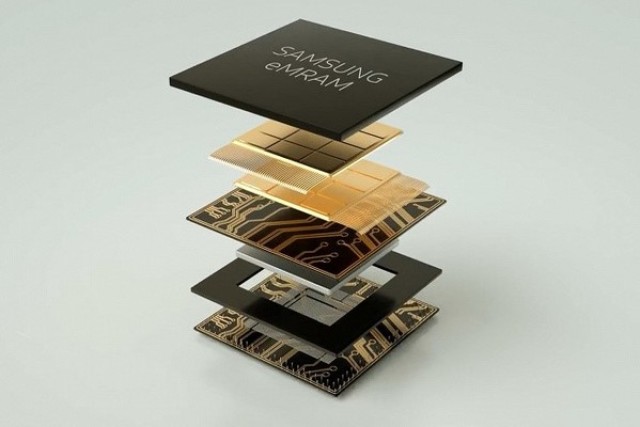Samsung was the first company in the world to implement the process of computing in MRAM RAM.
Magnetoresistive RAM has the potential to replace the usual DRAM, having many advantages. However, when it comes to computing directly in memory, there are a number of problems.
As stated in the scientific work of Samsung scientists, the development of an array of magnetoresistive random access memory with spin moment transmission remains a difficult task, despite the practical advantages of the technology. The complexity is associated with the low resistance of the MRAM, which would lead to high power consumption in a conventional matrix array using current summation for analog multiplication-accumulation operations. The company has created a 64×64 jumper array based on MRAM cells, which overcame the problem of low resistance thanks to an architecture using resistance summation for analog multiplication-accumulation operations. The array is integrated with reading electronics based on 28-nanometer CMOS technology. Using this array, a two-level perceptron was implemented to classify 10,000 handwritten digits with an accuracy of 93.23%. In the emulation of a deeper eight-layer neural network Visual Geometry Group-8 with measured errors, the classification accuracy increases to 98.86%. Samsung also used an array to implement one layer in a ten-layer neural network, and an accuracy of 93.4% was achieved in the face recognition task.
Samsung's development may allow the use of computing in MRAM memory to create AI, including as a platform for simulating the brain by modeling the connections of brain synapses.

